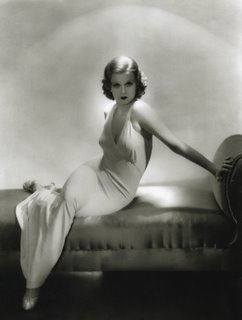
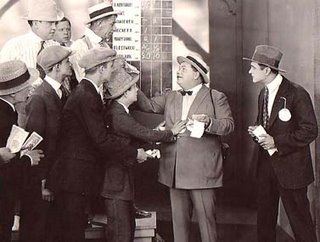 1920s Hollywood was awash in money…and scandal. While studios were raking in the cash, the newspapers of the era were selling papers by following the stars around and recording their every move. Names such as Charlie Chaplin, Mary Pickford, Douglas Fairbanks, Norma Shearer were not just known across the country they were famous overseas as well. Excess wasn’t just a problem among certain stars, it was almost a lifestyle, a party that didn’t seem to end.
1920s Hollywood was awash in money…and scandal. While studios were raking in the cash, the newspapers of the era were selling papers by following the stars around and recording their every move. Names such as Charlie Chaplin, Mary Pickford, Douglas Fairbanks, Norma Shearer were not just known across the country they were famous overseas as well. Excess wasn’t just a problem among certain stars, it was almost a lifestyle, a party that didn’t seem to end.Then the scandals hit the papers. Roscoe “Fatty” Arbuckle, William Taylor, Mabel Normand,
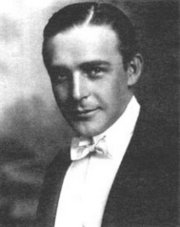 and Wallace Reid were names not just known to audiences for their work on the screen. They were linked to terrible scandals and crimes. Fatty Arbuckle was accused of the rape and murder of Virginia Rappe. Director William Taylor was murdered and Mabel Normand was just one of the suspects (Taylor’s murder was never solved). It was revealed during the investigation that Normand was addicted to drugs. She wasn’t the only one. Other stars were as well. Popular matinee idol Wallace Reid died from a morphine overdose. The public outcry was considerable; some communities formed groups to petition for the government to tone down what they viewed as an industry full of vice. Some theaters refused to book the films of some of the stars involved in scandal. Either way, the studios felt the pressure and sought to head off any type of real oversight and made a move to self-regulate the industry. Thus the Motion Picture Producers and Distributors Association (which was later renamed to the Motion Picture Association of America in 1945) was created to counteract negative publicity and to establish some form of oversight.
and Wallace Reid were names not just known to audiences for their work on the screen. They were linked to terrible scandals and crimes. Fatty Arbuckle was accused of the rape and murder of Virginia Rappe. Director William Taylor was murdered and Mabel Normand was just one of the suspects (Taylor’s murder was never solved). It was revealed during the investigation that Normand was addicted to drugs. She wasn’t the only one. Other stars were as well. Popular matinee idol Wallace Reid died from a morphine overdose. The public outcry was considerable; some communities formed groups to petition for the government to tone down what they viewed as an industry full of vice. Some theaters refused to book the films of some of the stars involved in scandal. Either way, the studios felt the pressure and sought to head off any type of real oversight and made a move to self-regulate the industry. Thus the Motion Picture Producers and Distributors Association (which was later renamed to the Motion Picture Association of America in 1945) was created to counteract negative publicity and to establish some form of oversight.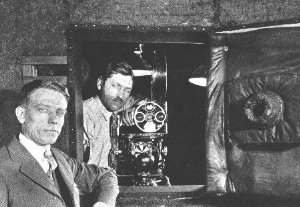 Former US Postmaster General William Hays was appointed to lead the MPPDA and he attempted to create a moral code to which the movies should adhere. His censor board would make suggestions to alter scenes and title cards, but studios paid little heed to them. Then two things happened in the late twenties that changed everything: the advent of the talking pictures and the Depression. The transition from silent films to sound was a difficult one. Many stars did not make the transition because their voices just didn’t translate well to sound films. All of the sudden a new generation of stars were emerging and musicals were becoming popular. Sound also created worries for the Hays office. Scripts and dialogue were closely reviewed for anything objectionable. However, studios cooperated somewhat, but still paid little regard to any “suggestions”. When the depression era hit, audiences were staying at home more often listening to that upstart industry, radio. The studios tried many things to keep audiences coming. The grittier dramas, gangster films,
Former US Postmaster General William Hays was appointed to lead the MPPDA and he attempted to create a moral code to which the movies should adhere. His censor board would make suggestions to alter scenes and title cards, but studios paid little heed to them. Then two things happened in the late twenties that changed everything: the advent of the talking pictures and the Depression. The transition from silent films to sound was a difficult one. Many stars did not make the transition because their voices just didn’t translate well to sound films. All of the sudden a new generation of stars were emerging and musicals were becoming popular. Sound also created worries for the Hays office. Scripts and dialogue were closely reviewed for anything objectionable. However, studios cooperated somewhat, but still paid little regard to any “suggestions”. When the depression era hit, audiences were staying at home more often listening to that upstart industry, radio. The studios tried many things to keep audiences coming. The grittier dramas, gangster films,  comedies and “fallen women” dramas still appealed to audiences jaded by life, so Hollywood pushed the envelope even further.
comedies and “fallen women” dramas still appealed to audiences jaded by life, so Hollywood pushed the envelope even further.In 1929 the film, The Divorcee, caused a sensation, packing in audiences. The film starred Norma Shearer as a women who discovers her husband’s infidelity and attempts to settle the score. Piqued by the enormous financial success of the film, other studios began to try and top each other. Alarmed by this, the Hays office adopted a formal written code. The problem was there was still no real way to enforce the code. As movies got racier and included (in some cases) nudity, drug use, overt and open sexuality, and prostitution. By 1933, communities and religious groups, included the newly created Catholic Legion of Decency, clamored for change. Films and theaters were boycotted.
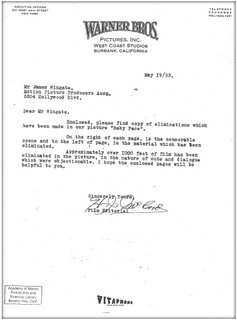 In 1934, the Hayes office created the Production Code Administration which required all films released after July 1, 1934 to obtain a certificate of approval before being released. Studios complied because not only did they prefer self regulation to the threatened government oversight, hefty fines could be imposed on studios and theaters alike that did not abide by the regulations. The PCA remained in place until the late 60s when the studios virtually ignored the MPAA and began circumventing them even more. The code was abandoned in 1968 in favor of a ratings system which still exists today.
In 1934, the Hayes office created the Production Code Administration which required all films released after July 1, 1934 to obtain a certificate of approval before being released. Studios complied because not only did they prefer self regulation to the threatened government oversight, hefty fines could be imposed on studios and theaters alike that did not abide by the regulations. The PCA remained in place until the late 60s when the studios virtually ignored the MPAA and began circumventing them even more. The code was abandoned in 1968 in favor of a ratings system which still exists today.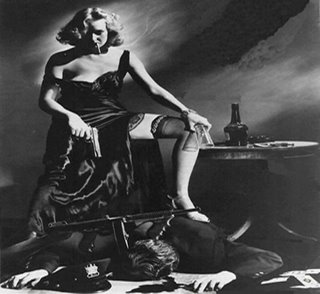
That time span from 1929 to 1934 is known as the “Pre-code era” when studios really skated close to the edge (or beyond) what was deemed acceptable. There are many films from the era that haven’t seen release on VHS or DVD, so when a set of Pre-code films hits DVD its both historically important, but its also great for film fans. Although these films seem tame compared to the films of the modern era, they truly had the capacity to shock as well as entertain.
Earlier this year, word was out that some pre-code Hollywood films were going to be collected in a new DVD collection, so classic film fans were eager for this set. Warner Brothers and Turner Classic Movies have released a set of three pre-code films as part of their TCM Archives DVD series: Forbidden Hollywood Collection, Vol. 1.
Forbidden Hollywood Collection Vol.1 includes three films, Red Headed Woman, Waterloo Bridge (1931), and Baby Face (including the pre-release version and the censored release version). In our review we'll take a look at the films, what makes them forbidden, other odd and ends about the films and our final take on the films and the DVD set.
The Films:
Red Headed Woman
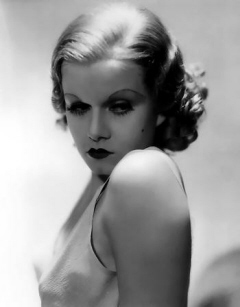 Jean Harlow stars in this story as a secretary, Lili "Red" Andrews, who does anything she can to make it into the upper crust society. When she has an opportunity to deliver some papers to her the home of her boss, Bill Legendre Jr., she seduces him. They are caught by his wife, Irene, and she runs out. Even though Bill patches things up with Irene, Lili continues to pursue Bill, and he continues to have an affair with her. Irene divorces him and Bill and Lili get married. Lili finally has money and some of the access it can purchase, but still is unaccepted by the elite social circle Bill is used to running in.
Jean Harlow stars in this story as a secretary, Lili "Red" Andrews, who does anything she can to make it into the upper crust society. When she has an opportunity to deliver some papers to her the home of her boss, Bill Legendre Jr., she seduces him. They are caught by his wife, Irene, and she runs out. Even though Bill patches things up with Irene, Lili continues to pursue Bill, and he continues to have an affair with her. Irene divorces him and Bill and Lili get married. Lili finally has money and some of the access it can purchase, but still is unaccepted by the elite social circle Bill is used to running in.When a business associate and family friend, Charles Gaerste, comes to
 visit, Lili tells Bill she wants to host a dinner party and invite Gaerste. She believes everyone would come to her event if he attended. Bill tells her Gaerste would not come, because of his affection for Irene. Lili then goes to Gaerste's hotel room to ask him herself. Gaerste declines, but Lili isn't daunted. She seduces him and blackmails him into coming. When the party doesn't provide the acceptance she seeks, she pleads with Bill to go to New York. Upon arriving she tracks down Gaerste and begins an affair with him (and the chauffer!), promising to divorce Bill and marry him. It isn't long before Bill figures things out and shows Gaerste the pictures his private detective has collected. Faced with ruin, Lili attempts to run back to Bill, but things continue to spiral down from there, with an ending that created controversy and upset some audiences.
visit, Lili tells Bill she wants to host a dinner party and invite Gaerste. She believes everyone would come to her event if he attended. Bill tells her Gaerste would not come, because of his affection for Irene. Lili then goes to Gaerste's hotel room to ask him herself. Gaerste declines, but Lili isn't daunted. She seduces him and blackmails him into coming. When the party doesn't provide the acceptance she seeks, she pleads with Bill to go to New York. Upon arriving she tracks down Gaerste and begins an affair with him (and the chauffer!), promising to divorce Bill and marry him. It isn't long before Bill figures things out and shows Gaerste the pictures his private detective has collected. Faced with ruin, Lili attempts to run back to Bill, but things continue to spiral down from there, with an ending that created controversy and upset some audiences.What makes it Forbidden?
Certainly with themes like marital infidelity, open sexuality of characters and attempted murder, you couldn't expect to get a pass from the Hays office. What really seemed to get to them and to audiences was the unrepentant nature of the character. Or scenes like where Bill slaps Lili hard, and Lili turns back to him and laughs and says "Do it again! I like it!". Alrighty, then.
Odds and Ends:
F. Scott Fitzgerald had written the original script, but producer Irving Thalberg thought it needed a lighter touch. Anita Loos was brought in for the rewrite. Thalberg had many scenes cut, but the movie was still controversial, it was even banned in Britain. The publicity generated by the controversy made the film a hit and Harlow a star.
Loophole's take:
Red Headed Woman was my least favorite film of the bunch, although the story and Harlow's portrayal was excellent. The ending was unexpected for a 1931 film in a Hollywood that tried to place so much emphasis on repentant characters.
Baby Face:

Barbara Stanwyck is Lily Powers, a women born on the wrong side of the tracks living with her dad after losing her mother. Her dad runs a speakeasy, where Lily slings the suds and her father expects her to provide the customers with extra attention when the price is right. Lily's only friends are maid Chico, and an old German cobbler named Cragg. When Lily's father is killed in an explosion, Cragg tells Lily that she needs to leave for the big town in order to survive. Cragg quotes Nietzsche to her and states that, as a woman, Lily has power over men and should use that power to get what she wants.
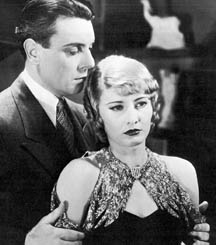 Lily and Chico leave for the big city, where Lily gets a job in a bank by..."ahem" using her power over men. She sleeps her way to the top granting favors to men in exchange for better jobs in the bank and wealth. Lily's rise continues until two suitors are killed in a murder/suicide in her apartment. When the bank attempts to buy Lily's silence to thwart further scandal, Lily raises her price stating that she just needs to "get away and start over". The new bank president, wealthy playboy Courtland Trenholm, then gets wise to her and instead transfers Lily to the bank's Paris office. Later in Paris, Trenholm and Lily meet again, and begin a relationship. Lily and Trenholm's romance and subsequent marriage create even more scandal for the bank, with almost disastrous results.
Lily and Chico leave for the big city, where Lily gets a job in a bank by..."ahem" using her power over men. She sleeps her way to the top granting favors to men in exchange for better jobs in the bank and wealth. Lily's rise continues until two suitors are killed in a murder/suicide in her apartment. When the bank attempts to buy Lily's silence to thwart further scandal, Lily raises her price stating that she just needs to "get away and start over". The new bank president, wealthy playboy Courtland Trenholm, then gets wise to her and instead transfers Lily to the bank's Paris office. Later in Paris, Trenholm and Lily meet again, and begin a relationship. Lily and Trenholm's romance and subsequent marriage create even more scandal for the bank, with almost disastrous results.What makes it Forbidden?
The Hayes office must have flipped over this one. Baby Face's overt sexuality and highly
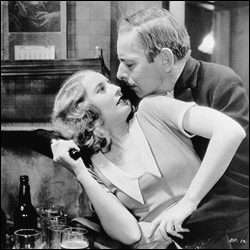 suggestive shots (plus that Nietzsche didn't help matters) really pushed and tore away the envelope. Today's audiences may not find too much that you wouldn't see on say, Lifetime, but it was very shocking for audiences of the day. The Hayes office recommended many cuts and revisions to the film,(several documents involving Baby Face are seen above) and Warner Brothers cooperated as much as possible, cutting almost 1000 feet of film.
suggestive shots (plus that Nietzsche didn't help matters) really pushed and tore away the envelope. Today's audiences may not find too much that you wouldn't see on say, Lifetime, but it was very shocking for audiences of the day. The Hayes office recommended many cuts and revisions to the film,(several documents involving Baby Face are seen above) and Warner Brothers cooperated as much as possible, cutting almost 1000 feet of film.Odds and Ends:
The pre-lease print was thought lost, until rediscovered in a Library of Congress vault in 2004. The print was cleaned and restored and toured several theaters in England and the U.S. Also, a very young John Wayne is one of the men that has a dalliance with Lily.
Loophole's take:
 This was the film that was really advertised as the "find" in the set. I liked it a great deal, and it was very interesting to have both versions to compare. The ending was a problem for censors, so filmmakers created a new ending that was tacked on for the released version. It was very artificial and contrived and it seems the filmmakers knew it, but had to get the film out some way. Stanwyck gives a very good performance here in a very early screen role. Stella Dallas would seem to be her real breakthrough, but her performance here makes it easy to see why she may have felt she was offered too many "fallen woman" roles. She's very earthy, very tough and yet sexy. An excellent film.
This was the film that was really advertised as the "find" in the set. I liked it a great deal, and it was very interesting to have both versions to compare. The ending was a problem for censors, so filmmakers created a new ending that was tacked on for the released version. It was very artificial and contrived and it seems the filmmakers knew it, but had to get the film out some way. Stanwyck gives a very good performance here in a very early screen role. Stella Dallas would seem to be her real breakthrough, but her performance here makes it easy to see why she may have felt she was offered too many "fallen woman" roles. She's very earthy, very tough and yet sexy. An excellent film.Waterloo Bridge:

Adapted from Robert Sherwood's stage play, this film is the story of a young American chorus girl, Myra, who finds herself on hard times in WW I London. Myra (excellently played by Mae Clarke) had left a show and hadn't had work in two years, and is surviving by prostitution. When taking shelter during an air raid, Myra meets a young soldier, Roy who is smitten with her. Roy and Myra begin a conflicted romance. Roy is young and naive and completely in love with Myra. Although it is clear that Myra is in love with Roy, she resists her feelings. When she learns that Roy comes from a wealthy family, she knows that their relationship cannot be possible. She attempts to push Roy away and struggles with her own feelings of love, and her attempt to keep Roy from finding out about her situation. Things get further complicated when Roy proposes to her.
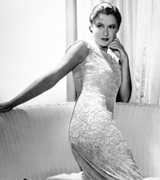 Roy, after asking her to meet his family, finally tricks Myra into coming to his family's home in the country. Myra develops a friendly relationship with Roy's family, but has a frank discussion with Roy's mom who politely tells her she disapproves of their union. Myra reveals her past to Roy's mom, who gently tries to tell Myra that although she has nothing against Myra that she should consider Roy's feelings. Myra runs away back to London. Although Roy rushes back and finds her, he is due to leave for the front again. He discovers what Myra has been hiding, but tells her he still loves her and wants to marry her. She agrees to marry him when he returns from the front, and her conflicted soul seems finally at peace. Roy goes off with his unit, and as Myra walks back home along Waterloo Bridge an air raid again begins. This time it ends in tragedy as Myra is killed by a bomb.
Roy, after asking her to meet his family, finally tricks Myra into coming to his family's home in the country. Myra develops a friendly relationship with Roy's family, but has a frank discussion with Roy's mom who politely tells her she disapproves of their union. Myra reveals her past to Roy's mom, who gently tries to tell Myra that although she has nothing against Myra that she should consider Roy's feelings. Myra runs away back to London. Although Roy rushes back and finds her, he is due to leave for the front again. He discovers what Myra has been hiding, but tells her he still loves her and wants to marry her. She agrees to marry him when he returns from the front, and her conflicted soul seems finally at peace. Roy goes off with his unit, and as Myra walks back home along Waterloo Bridge an air raid again begins. This time it ends in tragedy as Myra is killed by a bomb.What makes this Forbidden?:
Prostitution was seriously verboten by the Hayes office, and because it was central to the story, Waterloo Bridge was pushing things a bit. Also in the opening sequence we are back stage with the chorus girls. While there is no nudity, the girls do show quite a bit more than 1931 audiences were used to.
Odds and Ends:
James Whale, who directed this film, also directed Frankenstein with Mae Clarke. The film also features Bette Davis in an early screen appearance. Waterloo Bridge was also remade in 1940 with Robert Taylor and Vivian Leigh, and again in 1956 with Leslie Caron and John Kerr and renamed Gaby.
Loophole's take:
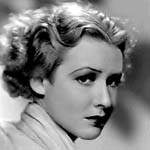 This film was the gem of the set. It was the last film that I watched, and the story and, in particular, Mae Clarke's performance easily made it the best film on the set. Mae Clarke portrayal of Myra and her inner conflict and feelings should have propelled her to a much greater career than she enjoyed. She would have been known more than as the girl smashed in the face with a grapefruit by James Cagney (Public Enemy). Her inner conflict is portrayed mostly by her eyes and her acting, with very little or no dialogue. What was it that Barbara Stanwyck said the Frank Capra taught her? The eyes- it's all about the eyes. Mae Clarke's very modern and amazing performance should a revelation to modern actresses... especially the talkative ones.
This film was the gem of the set. It was the last film that I watched, and the story and, in particular, Mae Clarke's performance easily made it the best film on the set. Mae Clarke portrayal of Myra and her inner conflict and feelings should have propelled her to a much greater career than she enjoyed. She would have been known more than as the girl smashed in the face with a grapefruit by James Cagney (Public Enemy). Her inner conflict is portrayed mostly by her eyes and her acting, with very little or no dialogue. What was it that Barbara Stanwyck said the Frank Capra taught her? The eyes- it's all about the eyes. Mae Clarke's very modern and amazing performance should a revelation to modern actresses... especially the talkative ones.The set
Extras:
The set is nicely packaged with few extras. Robert Osbourne has an introduction in which he explains the context of the Pre-Code years and discusses the films a bit. The only other extra included is the trailer for Baby Face, which was interesting to see how the marketed the film. I think the DVD set could have really benefited from a documentary on Pre-Code Hollywood, but since this is Volume One, perhaps that will be forthcoming in a later Volume. There are a lot more Pre-Code films out there, so one can hope.
Sound and Prints:
I had no issues with sound on any of the films, although the audio on Waterloo Bridge seemed low at certain times. I am no tech geek when it comes to DVDs, but the prints seem to be in excellent condition, especially the Pre-Code Baby Face. In fact, the released version has quite a few scratches and spots, which made the pre-release version all the more enjoyable.
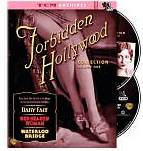
Overall:
The films are great, although to me, Red Headed Woman was the weaker of the set. It may seem a bit odd to audiences today that these films were censored, but placed in context of the time in which they were made, it is easy to see where they really pushed toward the creation of the PCA. The quality is excellent for the most part and although, I felt like a featurette that could have placed "Pre-Code" further in context was warranted, it should not deter anyone from picking up this great set. Perhaps that will come in a later volume. We recommend these films for the serious as well as casual classic film fan, or anyone interested in the history of Hollywood. Forbidden Hollywood Collection Vol. 1 definitely goes on The Shelf.
Forbidden Hollywood Collection, Vol. 1 is available from The TCM store, Barnes and Noble, Amazon and other retailers.
The documents pictured above are courtesy of the Margaret Herrick Library, Academy of Motion Picture Arts and Sciences and Warner Home Video.
Some Resources for further reading:
Books: Pre-Code Hollywood by Thomas Doherty
Sin in Soft Focus: Pre-Code Hollywood by Mark A. Vieira
Complicated Women: Sex and Power in Pre-Code Hollywood by Mick LaSalle
Dangerous Men: Pre-Code Hollywood and the Birth of the Modern Man by Mick LaSalle
Internet: Wikipedia, Production Code
Filmsite.org, Film History of the Twenties 
Strange interlude, nothing! When I kiss 'em, they stay kissed for a long time.

8 comments:
Interesting review. I'll be picking my copy up this weekend and I'll be watching some Babs in between rounds of Christmas flicks.
Another great article from the Shelf. You guys are on a roll.
Your section on the pre-code was very interesting and informative.
I personally don't care for Stanwyck, but I love Jean Harlow. I am very excited about picking this up am looking forward to seeing Waterloo Bridge after reading your review.
Loved the article. Never knew much about pre hayes code movies. I will have to check out the set.
Really interesting read. The movie I caught most of the other night was Red Headed Woman, but I didn't pay enough attention to make any judgements. This does sound like a nice little set though, as TCM seems to put out quality stuff.
The one I have seen, couple of times as a matter of fact, is Baby Face, and I think it's a terrific movie. I like Cagney, but I think Barbara Stanwyck was such a brilliant actress.
Thanks for the reviews. Very informative.
I love movies from the 30s and early 40s: most had quick and witty rat-a-tat dialogues that modern films rarely employ and actors that were multi-talented. What actor today could play George M Cohen in "Yankee Doodle Dandy"?
I never liked Barbara Stanwyck, her face was too severe for me, although Double Indemnity is in my top 100 films.
I liked yoour article so much I blogged it. I linked to your article from Scarlett Johansson and Jean Harlow.
Thanks to everyone for your comments. It seems for some Babs is either love her or don't. She was such a great actress, and from most accounts a great lady to work with. I love Jean Harlow, Babs and I now have an even greater respect for and love for Mae Clarke. It's difficult in looking around at the current crop of "hot" actresses now and wonder if a classic film is in them. The answer is perhaps... I think a few have turned out some great performances.
Retro: as always thanks for the support and the comments. Check out some of the other TCM Archives DVD sets- they are excellent.
bernie: thanks for the link and what an excellent article. (By the way- Jean does it for me too! What a picture!) I can see Scarlett Johansson as Harlow. Or perhaps even a newcomer. Her story (especially her romances, true love with William Powell, and her problems with her domineering mother) is ripe for a really oscar-worthy film. Martin Scorsese, are you listening?
Thanks for the article. I saw the Volume 1 movies, Red-Headed Woman and Waterloo Bridge earlier this afternoon. I'm one of those modern movie fans who didn't get the big deal, the big controversy about these movies.
The story of Red Headed Woman is so universal, I bet every culture on earth has a version. I think the Holy Bible has a couple versions.
The worst thing about Waterloo Bridge to me is the fundamental dishonesty of Myra. She could have just told Roy her story and let him decide for himself whether he wanted anything more to do with her. She had nothing to lose. Even Roy's mother was enough of a woman of the world that she was more disturbed about Myra's humble background than how she earned her living.
Post a Comment